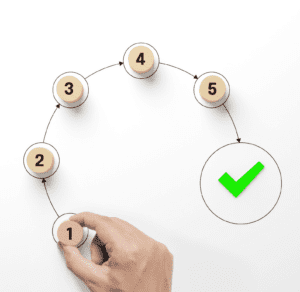
To put it simply, data migration is the act of moving data from one system to another. However, the data migration process takes a great deal of thought and planning. Whether you are moving data from a deprecating laboratory information management system (LIMS) to a new one or you’re a paper-based laboratory that has chosen to implement a LIMS for the first time, following these five essential steps will help facilitate a successful data migration.
Step 1: Planning
The planning process can be the most time-consuming, but a comprehensive data migration plan will help alleviate business downtime and laboratory data loss. Your lab needs to set aside time to designate the right team members to lead the effort, scope the project, and create a plan. A quality LIMS vendor will have a project manager work with your team to help answer the following questions:
- Do you have stakeholder buy-in? Is everyone from the data owners to the functional team, lab management, and executives on the same page regarding what they want to accomplish with this migration?
- Do you need all your legacy data? What needs to be in your LIMS and what can be stored in a data warehouse? What compromises are you willing to make?
- Is all the data suitable for migration? How much manual data keying will be necessary?
- Are there regulatory bodies in your industry requiring documentation of your data migration activities? Are there security and compliance guidelines that must be met to maintain your accreditations? Do you need to move sensitive patient/customer data separately from other data?
- Will you be maintaining both systems for a period or will this be an “all-in” data migration?
- What is the timeline for the migration? What will be the least disruptive to your business model?
Step 2: Mapping
Before migration, source data needs to undergo a complete audit. It is imperative to identify all the data sources that need to be migrated, including databases, files, and any other sources of data. The lab team must also identify the types of data that need to be migrated, including structured data (e.g., tables and columns) and unstructured data (e.g., documents and images). Any data dependencies between different data sources or types of data must also be considered during the mapping process.
Once your lab understands what data sources, types, and dependencies exist, the team must create a map, or a plan, for how the data will be migrated from the old system to the new system. Data mapping is the process of matching fields from one database to another using a template. For example, the lab’s current LIMS has a field for “City, State,” but the new LIMS separates the “City” and “State” into two different fields. Data mapping is the set of instructions that makes the data readily consumable.
Data maps vary in complexity and intricacy depending on the amount of data, varying data types, and the disparity between the data source and the LIMS.
Step 3: Cleaning
During the data mapping process, you may discover outdated or redundant data. Data cleaning (or cleansing) is the process of detecting and deleting untrustworthy, inaccurate, duplicate, or antiquated information from your data sets, archives, tables, and databases. During this step, your team needs to ensure your data has the right unique identifiers and standardization.
You don’t want to neglect the importance of data quality and spend the time and money to move duplicate data, non-business data, data that is infrequently utilized, or data that has been overly customized into your new LIMS software.
Step 4: Execution
During the planning stage, you developed your data migration execution strategy. Perhaps you decided to implement the migration on a weekend or immediately after business hours to reduce disruption to the laboratory staff. Maybe the choice was made to migrate the last 90 days of sample and results data first, and you will hold off on the remainder of the full year until a later time.
Whatever decisions were made, the execution stage of your data migration should be a straightforward process. Your data migration team should be monitoring the process and addressing any issues as they arise.
Step 5: Validation

Data migration is a complex process and becomes even more complicated when large amounts of data are involved. Once the data migration is fully executed, it’s time to evaluate the results. In other words, to ensure a successful migration, you test, test, test!
At the validation stage, it is important to determine an accurate data translation and no loss of data. Check for corrupt, missing, misformatted, or incorrect data. You don’t want to sunset your legacy system until you are fully satisfied that the data migration was completed perfectly.
LabLynx is your LIMS partner for data migration
Keeping your laboratory’s data in one place is a productivity multiplier. If your business does not have the in-house expertise or resources to handle a data migration project on your own, LabLynx can migrate your existing data into your new ELab LIMS software solution.
The LabLynx team of engineers will ensure that the migration is done efficiently and effectively, minimizing downtime and the risk of data loss. You can draw on the experience LabLynx engineers have with data migration projects.
LabLynx will comply with your laboratory’s data retention policies to ensure your data is properly managed, organized, and preserved over time. Data retention policies help ensure that your lab stays in compliance with relevant laws and regulations and that your data is managed in a way that preserves its integrity, security, and availability.
When you choose the LabLynx ELab LIMS, you can check worrying about data migration off your list.




